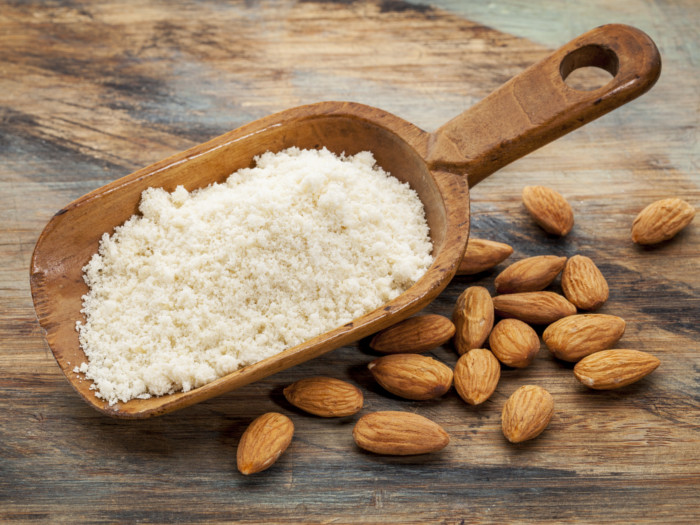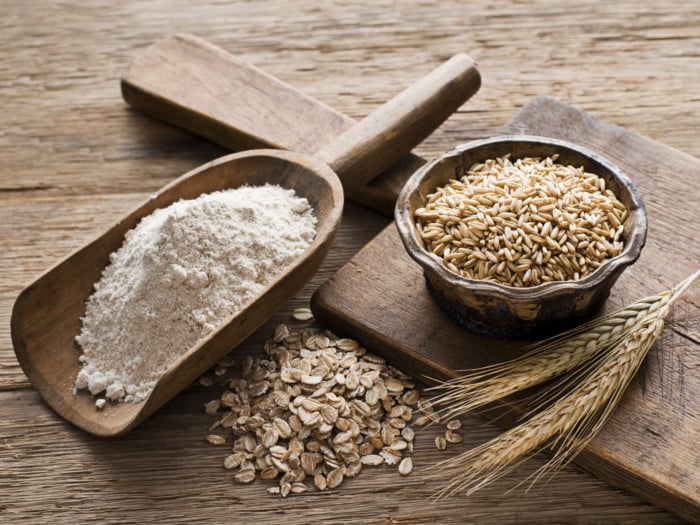There are several almond meal substitutes in the market for people who have nut allergies or for those who are looking for other gluten-free options.
As per the USDA, almonds are rich in vitamins, minerals, and other nutrients. Almond meal is a coarse mixture of ground almonds, including almond skins. Many people mistake it for almond flour, which is a finely ground flour made from blanched almonds. Almond meal is easy to make at home and it is often used in grain-free cooking. [1]
Top Almond Meal Substitutes
The top almond meal substitutes for people with nut allergies are all-purpose (white) flour and wheat flour. If you are looking for gluten-free alternatives, you can use coconut flour, cashew flour, or hazelnut flour.
All-purpose Flour
For baking recipes, all-purpose (white) flour can be subbed for the almond meal at a ratio of 1:1. But remember that almond meal contains natural fats, so you will have to adjust the eggs and oil content accordingly to get a moist cake.

Almond meal Photo Credit: Shutterstock
Wheat Flour
Use 1/2 cup of wheat flour for 1 cup of almond meal as wheat flour makes cakes dense. You can also experiment subbing 1 cup of almond meal with 1/2 cup of wheat flour and 1/2 cup of all-purpose flour, but the results will vary according to the recipe.
Coconut Flour
Coconut flour is a great gluten-free substitute for the almond meal. It has a sweet flavor but absorbs a lot of liquid as compared to almond meal. So you may have to add ingredients which increase the moisture content in cakes and cookies. Options include adding eggs, coconut milk, applesauce, any vegetable oil, or mashed bananas. [2]
Oat Flour
Just like almond flour, oat flour gives lightness and moisture to cakes and can be substituted at a 1:1 ratio. You can easily make it at home by grinding rolled oats; 1 cup of oats will give 3/4 cup of oat flour.
Almond Flour
If you have almond flour on hand and a recipe calls for almond meal, don’t stress. You can use a cup of almond flour for a cup of almond meal.
Cashew Flour
Cashew flour and cashew meal have the same texture and nutty flavor as almond meal and can be used in sweet as well as savory dishes.
Sunflower Seed Flour
This high-protein, high-fiber flour is an excellent nut-free substitute for almond flour. However, if you are using sunflower seed flour in any baking recipe, make sure to double the amount of cream of tartar. This prevents bread and cakes from turning green or purple as the seeds contain chlorophyll which reacts with baking soda.
Hazelnut Flour
Hazelnut flour and hazelnut meal can be used interchangeably instead of the almond meal in recipes.

Flour, wheat, and oats on a table Photo Credit: Shutterstock
Macadamia Flour
Macadamia flour is a great low-carbohydrate option for people on the Paleo diet.
Breadcrumbs
Several baked savory dishes call for an almond meal topping. The same crunchy texture can be recreated with breadcrumbs or semolina.
Polenta
Polenta, cornmeal and ground rice are good gluten-free options for topping casseroles if you don’t want to use almond meal.
Rice Flour & Quinoa Flour
A combination of rice flour and quinoa flour is a gluten-free option that can be used to bake muffins. [3]
While there are many alternatives for the almond meal especially for cakes and muffins, it is best to know that baking is an art which requires precise measurements. When making substitutions, you may have to experiment with measurements and ingredients to master the right recipe!
